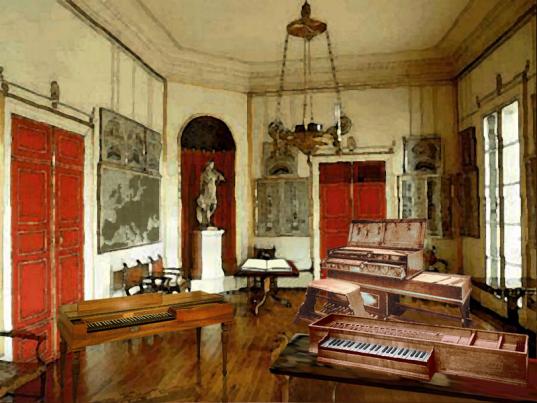Clavichords - Introduction

The clavichord was a popular instrument for centuries, yet it was hardly ever heard unless one played it themselves. The most outstanding virtue of the clavichord was its low volume, making it the ideal instrument for practice.
The basic construction of the clavichord evolved from the traditional instrument of music theorists, the monochord, over several steps. Instead of a single string, several strings were stretched over a soundboard, and the traditional movable bridge used to divide the string was transformed into a mechanism. A key lever was provided for each desired playing point, with a tangent, a simple metal strip, at its end. When a key was pressed, this tangent would strike the string from below and set it vibrating between the striking point and the bridge. The section of the string (usually to the left of the striking point) that was not supposed to vibrate was dampened with a strip of cloth woven through all the strings.
Since the tangent was firmly anchored in the key lever, the player had an immediate feel for the action; the fingertip was directly connected to the string's striking point via the lever and tangent. This allowed for sensitive control of the touch like no other keyboard instrument. It even allowed for a modification of the tone after the string was struck, such as through a rocking finger movement, known as the "Bebung."
Another advantage of the clavichord was that it was not necessary to have a separate string for each note. It was possible to have multiple key levers strike the same string, provided that these notes were not needed simultaneously (such as adjacent black and white keys). This construction was called a "fretted clavichord" because several notes were tied together.
From the early 18th century onwards, there was a trend towards providing each key with its own strings in order to meet the increasing musical demands. These instruments were accordingly called "unfretted." However, this required significantly more strings and thus more effort in tuning the instrument (as each note now had to be tuned individually). The instruments were larger and heavier and did not sound as free, as the increased string tension dampened the instrument somewhat.



